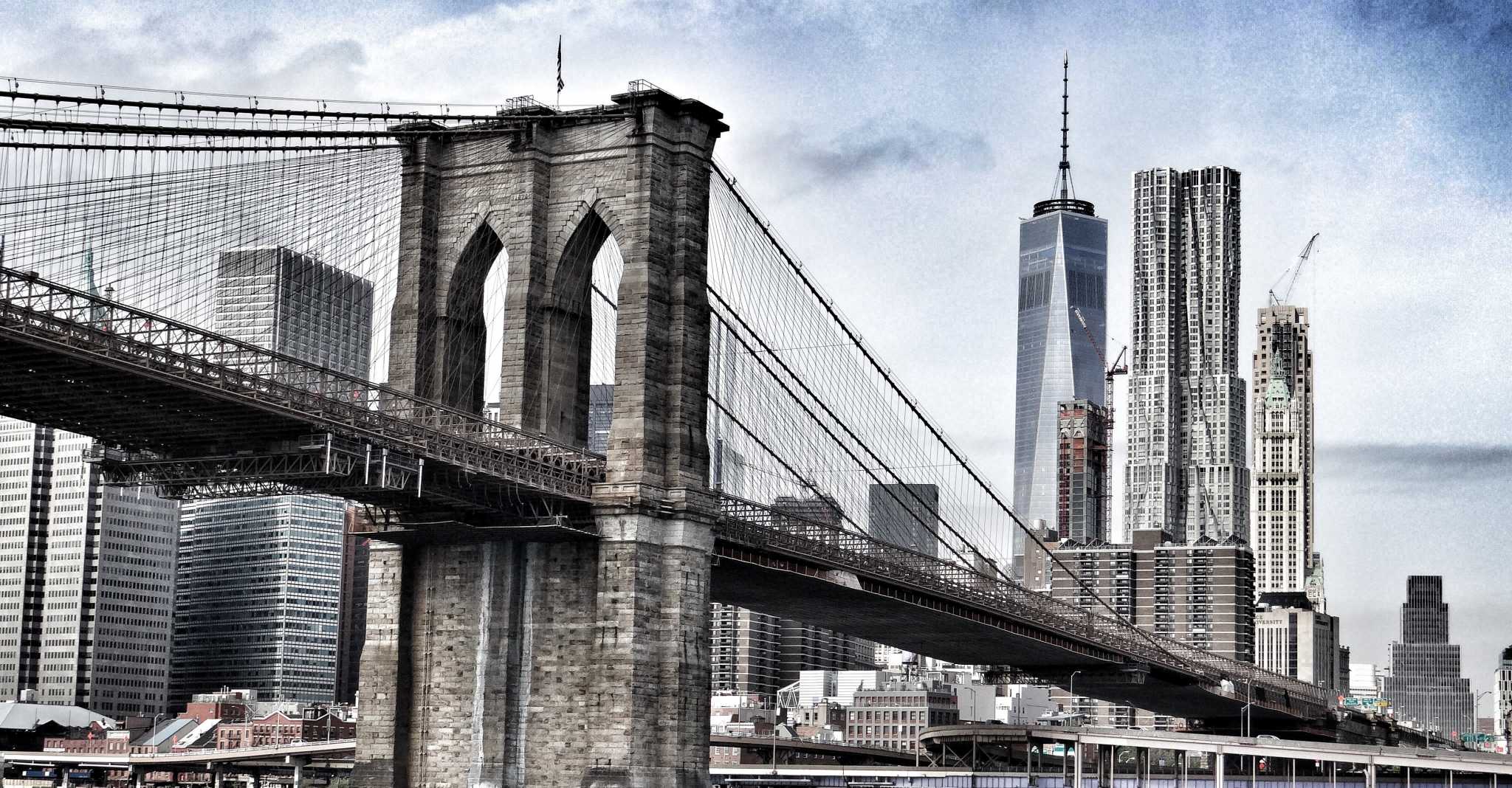9 Best Historical Sites in New York City
Ask a visitor what drew them to New York City and you’ll get a plethora of answers: the breathtaking views from soaring skyscrapers, captivating Broadway shows, a stroll along 5th Avenue laden with purchases. What you’re far less likely to encounter is a tourist who’s come to learn about its past, and that’s a pity, because the city boasts many interesting historical sites. Many people are familiar with George Washington and the American Revolutionary War, including the place where George Washington first read the Declaration of Independence to the Continental Army and the site of his inauguration as the 1st President of the United States. Visiting New York City is like stepping back in time, so why not let us introduce you to 9 of the best historical sites in New York City?
Listed below are the Top 9 Best Historical Sites in New York City:
- City Hall Park
- St. Paul’s Chapel
- Trinity Church
- Bowling Green
- The Battery / Battle of Brooklyn
- Fraunces Tavern
- Stone Street
- Wall Street
- Federal Hall
New York City History
New York City was the first capital of the United States and home to many of the most important events in the founding of the country. At the time of the American Revolutionary War, George Washington fiercely defended New York City due to its strategic proximity to the Hudson River. In his opinion, the control of that river was the “Key to the Continent”. The British would occupy New York City from 1776 to 1783. With the signing of the Treaty of Paris on September 3, 1783, the sovereignty of the United States was finally recognized. On November 25th of that same year, the last of the British troops evacuated New York City and a new and thrilling chapter in the city’s history would begin.
1. City Hall Park
Location: Corner of Broadway and Park Row
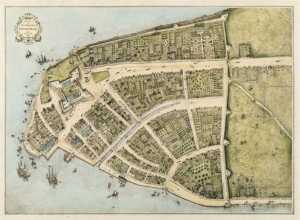
City Hall Park is the site of the old city Commons. This was land where anyone could graze their livestock, collect firewood and cut turf for fuel. By 1768, the British had built a Bridewell, or jail, for the purposes of holding American prisoners of war. Some were hanged there on the gallows. Look carefully and you’ll see a bronze plaque which reads: “Near this site stood the provost prison where patriots died for the cause of freedom 1776-1783.” It was entirely fitting, therefore, that George Washington chose the location to read the Declaration of Independence to the troops of the Continental Army. This historic occasion took place on July 9, 1776, making it the first reading of the Declaration of Independence in New York. At that time, the view north would have been very different than it is today. City Hall Park marked the city limits; beyond lay farmland and forest. But development would soon come. Some buildings, like the Tweed Courthouse and New York City Hall, would end up being located in the green space itself.
2. St Paul’s Chapel
Location: 209 Broadway
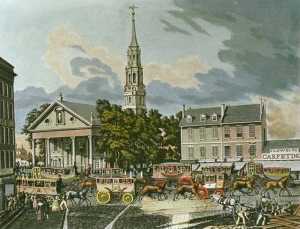
When the first worshippers at St Paul’s Chapel said their prayers in 1766, they might have given thanks to God for shortening their walk to church, though it was barely a few blocks to its parish partner, Trinity Church. Incredibly on September 21, 1776, St Paul’s survived the “Great Fire” which consumed Trinity Church. People formed a human chain to pass buckets of water from the Hudson River to successfully douse the flames. They were known as the “Bucket Brigade”. That heroic achievement makes it the oldest public building in continuous use in New York City. During the 9/11 attacks, it once again stood firm and was dubbed “The Little Chapel that stood”. It’s thought that a sycamore tree in the churchyard took the brunt of the impact from the attack. Artist Steve Tobin later used the fallen tree as inspiration for a sculpture called the Trinity Root which stood for a time in the churchyard. Close by, the Bell of Hope, cast in the historic Whitechapel Foundry in London, is rung each year to mark the anniversary.
3. Trinity Church
Location: 75 Broadway
The Trinity Church you see on Broadway today isn’t the first. That distinction goes to the building that a small group of Church of England faithful erected in 1698. It served them for a time but was lost during the Great New York City Fire of 1776. Its replacement was in turn superseded when heavy snowfalls damaged its structural integrity. The current church was consecrated on Ascension Day 1846. It became the tallest building in the US for a while, losing out in 1869 to St Michael’s Church in Chicago. But size isn’t everything: it’s also significant as the place where founding father Alexander Hamilton is buried. More recently, the church was a place of refuge during the horrifying events of September 11, 2001. Passers-by crammed into the church to protect themselves against falling debris. Trinity Church NYC happens to be one of the largest landowners in Manhattan.
4. Bowling Green Park
Location: Whitehall Street
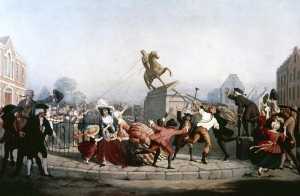
Bowling Green is the oldest park in New York City. It’s generally held to be the place where Peter Minuit bought Manhattan in 1626 for “the value of 60 guilders”. Early on, it was a cattle market and a place for people to meet. It became a park in 1733. John Chambers, Peter Bayard, and Peter Jay leased the land for a peppercorn rent after agreeing to plant trees and lay sod so that it could become a more pleasant place for recreation. In 1770, a statue of King George II was erected, but the ill-fated monument wouldn’t last for long. After General Washington’s speech at the City Commons in 1776, Patriots stormed down Broadway to Bowling Green and tore it down. They sent the statue to a foundry in Connecticut where it was melted down to make 42,088 musket balls for the Patriots to use against the English. The Patriots also ripped off the iron crowns that were on many of the gate’s posts. The original gate from 1776 still circles Bowling Green Park to this day. You can see fragments of the statue at the City Museum of New York in the Upper East Side.
5. Castle Clinton
Location: Battery Park

The Battery is located in a section of Battery Park near where the Hudson and East Rivers converge. This location was home to the first Dutch settlers in New York City who came here in 1623. A battery of cannons were set up at the time to defend the city from attacks. When standing in Battery Park you can gaze out over the rivers and see Ellis Island, the infamous immigration processing center. But Ellis Island wasn’t the first building to welcome immigrants from across the globe into this new land. Prior to the construction of Ellis Island, the job was carried out at Castle Clinton. The fortification is one of four built at the beginning of the 19th century in response to increasing tensions with the British. Initially it was known as Southwest Battery and was equipped with 28 cannons, each of which could send a 32 pound (14.5 kg) ball sailing 1½ miles (2.4 km) through the air. The presence of those four forts kept the British Navy at arm’s length and in fact, no shot was ever fired from the Southwest Battery. Five years later, in 1817, the base was renamed Castle Clinton in honor of Dewitt Clinton, who held the office of both mayor and governor.
From Castle Clinton you can also see Brooklyn across the East River. Brooklyn happened to be the location of one of the great battles of the American Revolutionary War, the Battle of Brooklyn. On August 27, 1776, British forces clashed with General Washington and the Continental Army in the Battle of Brooklyn. George Washington’s Army suffered heavy casualties and were in danger of being defeated and captured. Two days later on August 29, 1776, under the cover of night General Washington and 9,000 of his troops crossed from Brooklyn to Manhattan to escape British forces. Many historians call this escape the greatest military retreat in history.
6. Fraunces Tavern NYC
Location: 54 Pearl Street
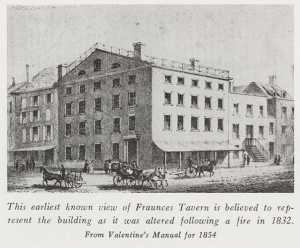
Located in downtown Manhattan and just a few blocks from Wall Street, Fraunces Tavern is one of the oldest operating taverns in New York City. It was built in 1719 as a private residence. A prosperous merchant named Stephen Delancey lived there for a time, but sold the property to Samuel Fraunces in 1762, who converted it into an inn in the same year. It is the site where on December 4, 1783, General George Washington gave the farewell speech to his officers of the Continental Army after the Revolutionary War had ended. Listed on the U.S. National Register of Historic Places, Fraunces Tavern houses a bar and restaurant on the ground floor, but it’s worth stepping upstairs to visit the museum which recounts key moments in the building’s engrossing history.
Fraunces Tavern played a key role during the early years of New York’s history as a meeting place for prominent figures of the Revolutionary War. After the war, it became a center for political discussion, hosting debates and gatherings that helped shape the young nation. Today, the tavern continues to serve as a reminder of New York’s colonial past, offering a glimpse into the daily life of the era. The museum inside showcases memorabilia and artifacts from the Revolutionary War, providing a deeper understanding of the tavern’s significant role during the formation of the United States.
7. Stone Street
Location: Stone Street
A street located at the current location of present day Stone Street was first established in the early 1600’s. Stone Street, as it is now named, was one of the first paved roads in New York City and provides visitors with a window back in time of what 17th Century New York City street looked like. Nowadays it is a popular meeting spot for Wall Street bankers and social gatherings.
If you’d have stood on what’s now Stone Street in the first half of the 17th century, then depending on precisely where you placed your feet, you’d have been in either Hoogh Straet (the Dutch for High Street) or Breuers Straet (which translates as Brewers Street). When cobblestones were laid in 1658, it became one of the earliest roads in New York to be paved. Those same cobbles also gave the thoroughfare its new identity: Stone Street. Disaster struck in 1835, when a devastating fire broke out in a nearby warehouse. Strong winds fanned the flames and it quickly took hold across Lower Manhattan. The fire swept through 17 city blocks, leaving nothing more than a charred, smoldering mess. But Stone Street rose from the ashes and was rebuilt. Even as late as the turn of the 20th century, most properties were still only four stories tall and today this charming street and its immediate surroundings are classed as a historical district.
8. Wall Street
Location: Wall Street
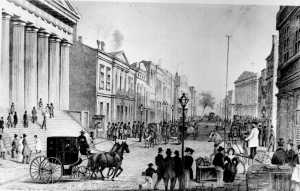
Wall Street is synonymous with banking and financial services industry, home to the New York Stock Exchange and NASDAQ. The street has 17th century origins, taking its name from the rampart that once flanked it. Many decades later, on the morning of Presidential Inauguration on April 30, 1789, General George Washington walked up Wall Street to the site where Federal Hall now stands to the cheers of crowds lining the street. But even then, the wall was long gone. Towards the end of the 19th century, much more impressive buildings that typified the Gilded Age, with elaborate façades and prestigious occupants, replaced existing structures. Today’s visitors should take a closer look at Federal Hall National Monument, a building constructed in the style of a neoclassical temple that houses the New York Stock Exchange and several early 20th century skyscrapers.
9. Federal Hall
Location: 26 Wall Street
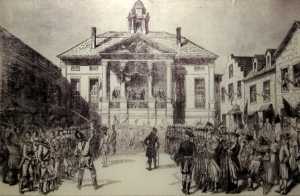
If you like, you could consider this the birthplace of American government. The Greek Revival-style building you see today stands on the site of an earlier one. The first, constructed in 1703, was the first city hall. Delegates from some of the American colonies met there in 1765 to issue a declaration protesting to the British monarch against taxation without representation. Twenty years later it became the seat of the first Congress, taking a new name – Federal Hall – in 1789. There, on April 30th of the same year, General George Washington was inaugurated as the 1st President of the United States. After his inauguration, the Chancellor of New York, Robert Livingston announced, “Long Live George Washington, President of the United States!” to the crowd attending the ceremony to roars of applause. In 1812, the building was torn down and replaced by the structure you see today. By then, the national capital had shifted down to Washington DC, so Federal Hall’s replacement instead housed the US Custom House for the Port of New York.
Whether you live in New York City or have plans to travel to New York City soon be sure to check out these historical sites.
If you have some favorite historical sites in New York City I would love to hear about them just shoot us an email at info@explorerspassage.com.
You won’t be disappointed!
Cheers,
Jeff
Jeff Bonaldi
Founder & CEO
The Explorer’s Passage
About Jeff Bonaldi
Jeff Bonaldi is the Founder and CEO of The Explorer’s Passage, a premier adventure travel company. His mission is to provide travelers with the opportunity to transform their lives and the planet through the power of adventure.
Learn more about Jeff’s story and his company HERE.
Share this amazing location!

